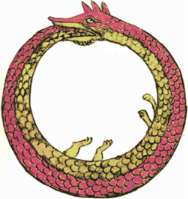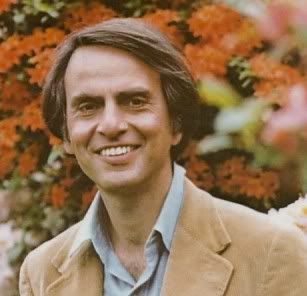PART I: STRANGE ATTRACTORS
This is not another attempt to catalogue connections to the Numbers. Nor do I claim to describe any property natural to 4, 8, 15, 16, 23, 42. My theory is rather that the Numbers are a so-called "strange attractor" in the chaos of world events. Knowing their pattern permits more accurate predictions of, and thus greater influence over, the future.
In any changing system, an "attractor" is the position (or set of positions) that the system will gravitate toward over time. As one commentator elaborates:

But chaos shouldn't be confused with complete randomness. Mathematically chaotic systems still follow discernible patterns. One of the most famous is the Lorenz Attractor, which shows outcomes from a simple model of atmospheric convection over time.

No two outcomes are the same, yet they all follow the general pattern of a butterfly. Attractors derived from different equations create different patterns of varying beauty.

PART II: THE NUMBERS
This brings me to the Numbers, whose strange attraction obviously predates the show. Over thousands of years, the chaos of human meaning has converged repeatedly around 4, 8, 15, 16, 23, and 42. As numerous threads attest, each Number is at the center of a dense web of scientific and mythical associations, which is presumably why TPTB picked them.
This strange attraction is even more pronounced within the reality of the show, where the Numbers seem to predict and even influence events and actions. Obviously, that's impossible from a strictly scientific perspective. But is there some plausible pseudo-scientific way to explain the Numbers' effect? Yes, thanks again to strange attractor theory.
As I said, a strange attractor follows a chaotic but discernible pattern when mapped over time. You can't be sure precisely what path any given orbit will take, but you can bet it will follow the same general pattern of prior orbits. Knowing that pattern thus enables a general forecast of the future, albeit limited by the system's inherent uncertainty.
Orbits and Ouroboros
There are six Numbers, a value that may be as important as any of the actual Numbers themselves. It takes a minimum of six values to describe a point moving through space. The first three denote spatial location, the others momentum. In theory, therefore, the Numbers could describe some attractor's recurring orbit.
And here again alchemical aspect of the show looms large. The "ouroboros" of the serpent swallowing its tale is an ancient symbol of what Nietzche referred to as "eternal recurrence." The basic idea is that history repeats itself -- as the saying goes, "only the names and faces change." One goal of alchemy was to transcend and harness this cycle of repetition.

That's what the Numbers do. By describing a recurring cycle of events, they enable forecasts of, and thus influence over, the future. But human behavior is chaotic, meaning any orbit must be erratic and the attraction strange. The cycle of recurrence will coalesce around, but rarely perfectly match, the pattern of the Numbers -- predictions will never be perfect.

If you think about it, though, that's still a pretty awesome power. One of my favorite threads is dweisspt's Improbable Remote View Theory. Therein she posits that Dharma may have mathematically forecasted that a number of people would survive the crash of Flight 815. That's precisely the kind of generalized prediction that I think the Numbers are meant to generate.
Foreknowledge, in turn, permits one to influence the future. Let's say you suspect that people in certain rows will survive the crash in a pattern that follows the Numbers. All it takes is a subtle nudge here and there to insure that the subjects you want end up in those rows. Not all of them will survive, and some you don't want will make it by chance.
That's Lost in a nutshell. Only some of them were meant to be there -- not everyone is a good person.
This is not another attempt to catalogue connections to the Numbers. Nor do I claim to describe any property natural to 4, 8, 15, 16, 23, 42. My theory is rather that the Numbers are a so-called "strange attractor" in the chaos of world events. Knowing their pattern permits more accurate predictions of, and thus greater influence over, the future.
In any changing system, an "attractor" is the position (or set of positions) that the system will gravitate toward over time. As one commentator elaborates:
An attractor can be a point (e.g., the centre of a bowl containing a ball), a regular path (e.g., a planetary orbit), a complex series of states (e.g, the metabolism of a cell) or an infinite sequence of chaotic trajectories located in a bounded region of phase space (called strange attractor). (Full text here.)That last type, the "strange" attractor, is of particular relevance here because the natural world is a chaotic system. A great example is the weather, where outcomes are highly sensitive to initial effects (e.g., the beating of a butterfly's wings) rendering forecasts unreliable.

But chaos shouldn't be confused with complete randomness. Mathematically chaotic systems still follow discernible patterns. One of the most famous is the Lorenz Attractor, which shows outcomes from a simple model of atmospheric convection over time.

No two outcomes are the same, yet they all follow the general pattern of a butterfly. Attractors derived from different equations create different patterns of varying beauty.

PART II: THE NUMBERS
This brings me to the Numbers, whose strange attraction obviously predates the show. Over thousands of years, the chaos of human meaning has converged repeatedly around 4, 8, 15, 16, 23, and 42. As numerous threads attest, each Number is at the center of a dense web of scientific and mythical associations, which is presumably why TPTB picked them.
This strange attraction is even more pronounced within the reality of the show, where the Numbers seem to predict and even influence events and actions. Obviously, that's impossible from a strictly scientific perspective. But is there some plausible pseudo-scientific way to explain the Numbers' effect? Yes, thanks again to strange attractor theory.
As I said, a strange attractor follows a chaotic but discernible pattern when mapped over time. You can't be sure precisely what path any given orbit will take, but you can bet it will follow the same general pattern of prior orbits. Knowing that pattern thus enables a general forecast of the future, albeit limited by the system's inherent uncertainty.
Orbits and Ouroboros
There are six Numbers, a value that may be as important as any of the actual Numbers themselves. It takes a minimum of six values to describe a point moving through space. The first three denote spatial location, the others momentum. In theory, therefore, the Numbers could describe some attractor's recurring orbit.
And here again alchemical aspect of the show looms large. The "ouroboros" of the serpent swallowing its tale is an ancient symbol of what Nietzche referred to as "eternal recurrence." The basic idea is that history repeats itself -- as the saying goes, "only the names and faces change." One goal of alchemy was to transcend and harness this cycle of repetition.

That's what the Numbers do. By describing a recurring cycle of events, they enable forecasts of, and thus influence over, the future. But human behavior is chaotic, meaning any orbit must be erratic and the attraction strange. The cycle of recurrence will coalesce around, but rarely perfectly match, the pattern of the Numbers -- predictions will never be perfect.

If you think about it, though, that's still a pretty awesome power. One of my favorite threads is dweisspt's Improbable Remote View Theory. Therein she posits that Dharma may have mathematically forecasted that a number of people would survive the crash of Flight 815. That's precisely the kind of generalized prediction that I think the Numbers are meant to generate.
Foreknowledge, in turn, permits one to influence the future. Let's say you suspect that people in certain rows will survive the crash in a pattern that follows the Numbers. All it takes is a subtle nudge here and there to insure that the subjects you want end up in those rows. Not all of them will survive, and some you don't want will make it by chance.
That's Lost in a nutshell. Only some of them were meant to be there -- not everyone is a good person.







